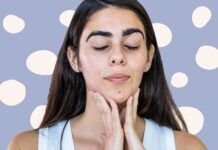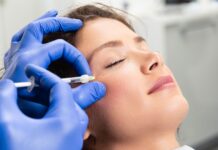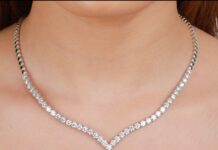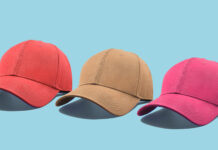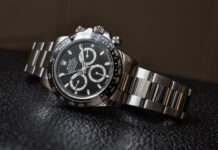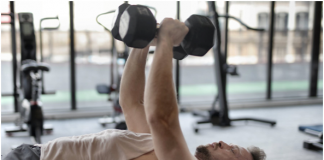First aid is the primary provision that should be done while dealing with any emergency condition. The knowledge of first aid is important in order to fulfill following three objectives:
- To prevent any further injury,
- To preserver and safeguard life of the victim,
- To speed up recovery of the victim.
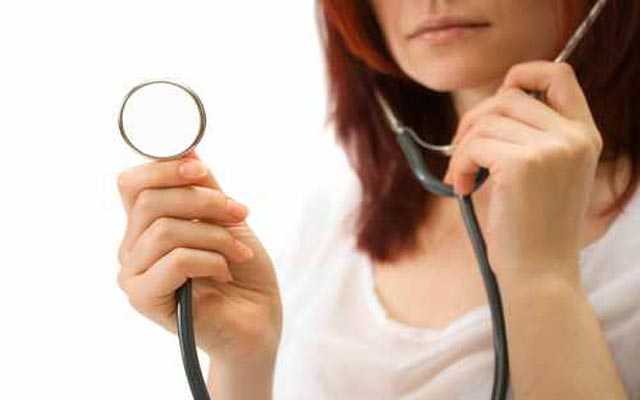
It is highly imperative for all of us to know about the first aid procedures that are crucial to tackle the everyday emergencies arising in our lives. Simple procedures and yet simple guidelines can save the lives of those in distress.
First aid is the first and foremost treatment and care given before any professional care is rendered.
Why is First Aid Important?
Owing to a variety of infections going around, the knowledge of first aid is highly important for us. First Aid is primarily concerned with handling minor cuts, burns or emergencies. In other words basic first aid is the first reaction towards any type of medical emergency.
Having a basic knowledge of first aid and dealing with accidental situations is indeed a wise effort. It is an excellent common sense to have first aid kit or preparedness for unfortunate disaster.
The knowledge and training about first aid will help you react in demanding situations effectively and efficiently without wasting time.
1. First Aid For Handling Breathing Difficulties
If you land up in a situation where someone is unable to breathe and does not respond to touch or talking. While waiting for an ambulance you can give the following basic first aid to the patient:
Perform the basic life support for one minute.
- It is good to place the person on his/her back on the floor.
- Place your fingertips below the jawbone and tilt the head with the chin pointing towards up. Try lifting gently and press the forehead softly and gently. This will help you ensure that the tongue is not pressed inside the mouth.
- Keep on holding the head in this situation and observe the chest for breathing for only 10 seconds.
- If there is no breathing then give the basic life support.
-
Basic life support
You should put the heel of your hand in the middle portion of the chest just above the breast. Do not put your hand over the ribs or stomach. Put your other hand over the first hand and keep fingers off the chest and lock them with each other. Apply pressure on the chest with your and heels only.
- Your elbows should be straight.
- Do this process for about 100 times a minute.You should pinch the nostrils together and take a deep breath and seal your mouth over the victim’s mouth.
- Then breathe slowly and gently in the person’s mouth.
2. First Aid For Handling Bleeding
The most important thing while handling bleeding is to stop blood as soon and as quickly as possible. Application of a tourniquet or external pressure can stop bleeding. Spirit or alcohol can also be applied after a thorough wash with water.
3. First Aid For Handling Small Cuts
If there is a small cut in a vein, wash the area with clean and cold water and apply a clean bandage with some antiseptic cream or ointment. Cuts are the injuries that render the skin open. Cuts can be minor or deep depending upon the intensity of injury.
First Aid (Treatment) of the Minor Cuts
- First of all clean the affected area.
- Do not use soap.
- Remove the debris and dirt from the region.
- Apply a clean bandage with an antiseptic cream.
- Change the dressing daily.
- Apply pressure to stop bleeding
Deep Cuts may require the medical interventions.
4. First Aid For Handling Deep Cuts
If there is a deep cut in some vein, you should apply pressure on the region. This can be done with a clean and sterile cloth followed by application of an antiseptic ointment. A bandage should be applied thereafter.
If the wound is too deep, stitches may be needed that can be given by a qualified doctor only.
5. First Aid For Arterial Bleeding
Remember arterial bleeding should only be treated by a qualified doctor. Arterial blood is relatively light in color and application of hard pressure may be helpful to some extent in controlling the bleeding while you wait for the medical assistance. As first aid you should raise the bleeding area against gravity to minimize blood loss.
6. First Aid For Bleeding From Nose
Bleeding from nose occurs generally when a small blood vessel from the mucous membrane bursts on its own due to extreme temperature. As first aid, avoid bending the head backwards or lying down because this may increase the blood pressure in head which in turn augment the bleeding.
Pinch the nostrils to minimize the blood loss. Application of a cold pack over the nostrils is also helpful in controlling the nosebleed.
7. First Aid For Dealing with Shock
When less quantity of blood reaches brain then shock occurs. This means that the brain is not getting sufficient amount of oxygen. The individual experiences a feeling of faintness, dizziness and disorientation. Shock is seen to occur following an infection, during an accident, a serious burn or excessive bleeding.
A person in shock may have following symptoms:
- May become pale
- Become dizzy
- Become anxious or restless
- Loss of consciousness
First Aid For Handling a Person in Shock
- Raise the foot end of the person in shock in order to increase the supply of blood to the brain.
- Make the person feel comfortable and warm.
8. First Aid For Handling Choking
When the windpipe passage is blocked then choking occurs. This also happens when food particles gets stuck in the windpipe before being properly swallowed. If the person is able to talk, ask him how he feels and avoid talking too much.
As first aid Heimlich manoeuvre is the best way to deal with choking.
What Is Heimlich Manoeuvre?
- You should stand behind the suffering person
- Now place your arms around his/her waist and then try to bend him/her forward.
- Next you should clinch your fist and then place it right a little above the person’s naval.
- You should place the other hand over the first one and thrust hands backward in a hard movement.
9. First Aid For Handling Snake Bites
Every year thousands of people are bitten by snakes. It therefore is quite important to learn how to give first aid to handle snake bites at the initial level.
- First wash the wound
- Immobilize the affected area to prevent the poison from presiding any further.
- Elevate the affected area.
- Apply a wet cloth on the affected area.
- Next apply a firm bandage about 2-4 inches above the affected region.
- Call the doctor for further medical assistance.
10. First Aid For Electric Shock
When an electric current passes through a person’s body he/she may have following symptoms.
Falling down
- Dehydration
- Seizures
- Burns
- Fractures
- Clotting of blood
- Muscle contraction
First Aid Immediate measure
- Do not move the person form the source of current.
- Switch off the current source to cut down the supply.
- Us e a wooden stick to separate the person from current source.
- Check for respiration
- If no breathing do Cardiopulmonary resuscitation or CPR.
- If minor burns are present wash with clean water and apply an antiseptic cream.
- Take the person to a nearby hospital for further treatment.
11. First Aid For Burns
Skin protects our body from any kind of external infection. Burns destroys the vital skin and leaves us susceptible for infections. Minor burns are not dangerous but serious burns may threaten your life.
First Aid Immediate measure
- Keep the affected area cool with cold water.
- Rinse the affected region with water.
- Look for any blistering or charred skin.
- Apply antiseptic creams that will soothe the affected area.
- Give water or ORS (Oral Rehydration Solution) to drink to maintain the hydration of the body.
- Never apply oil or butter on the region.
12. First Aid For Handling Abdominal Pain
- In case of heartburn, you may take an antacid.
- For constipation, stool softener or a mild laxative is beneficial.
- For any pain, you may take acetaminophen avoid ibuprofen as it may cause stomach irritation or even bleeding.
13. First Aid For Dealing With Diarrhea
Diarrhea is a medical condition that causes loss of fluids from the body. If left untreated you may become dehydrated and may have serious electrolytic imbalance.
- Avoid Dehydration
- Drink a lot of fluids. It is best to take glucose or oral rehydration solution-ORS
- Eat probiotic yoghurt
- Eat BRAT diet- Banana Rice apples applesauce, and dry toast. This diet is usually advised to children as it is capable to shorten episodes of diarrhea.
If vomiting and loose motions do not stop for more than 2 days, immediately seek medical help.
14. First Aid For Dealing With Vomiting
- Reassurance is of utmost importance so try to calm down the person
- Wipe the person’s face with a damp and clean cloth.
- Drink a lot of fluids.
- Lemon juice may be given.
- Avoid giving milk and dairy products as they may aggravate the condition.
- Give bland diet.
- Avoid giving spicy foods.
- Give BRAT diet after 24 hours. BRAT diet consist of banana, rice , apple sauce without sugar and toast.
- ORS should be given.
- Anti-emetics may be given.
- If vomiting does not stop, consult a doctor.
15. First Aid For Dealing With Nappy Rashes
- Diaper rash worsen if the diaper is left for too long.
- Change the diaper quite often.
- Expose the baby’s bottom to fresh air for few seconds.
- Wash with clean water or sponge with water and pat dry.
- You may apply baby lotion or any antiseptic cream in the groin region.
- Do not use plastic pants.
- Apply calendula salves on the buttocks to soothe the skin.
- Zinc oxide creams may also be helpful for retaining moisture.
- Vitamin A and D lotion is also helpful in treating the diaper rash.
16. First Aid For Dealing With Itching
Itching may occur by exposure to plant pollen, dust, insect bite or any skin irritant.
- Wash the itchy area with clean water.
- You may wash the area with weak acids like lemon juice, vinegar, etc.
- Application of calamine lotion may also provide relieve from itching.
- Application of cold compress may also be helpful.
If itching persists, seek the services of a dermatologist.
17. When your skin becomes exposed to a plant pollen or other skin irritants that don’t involve insect bites, as first aid immediately wash the area with cold running water.
18. First Aid For Dealing With Seasonal Allergies
As basic first aid try to increase your fluid content to combat allergies. You should take a lot of vitamins and fruits. Increase your immunity and seek the advices of a doctor if condition worsens. Avoid exposure to allergens like pollen, dirt, dust, etc.
19. Dealing With Fractures
- Immobilize the affected part with a splint.
- You may use a wooden stick, magazine, or any hard object.
- Maintain fluid balance so rink a lot of liquids.
- Give a mild analgesic or pain killer to subside the pain.
- Take the person to an orthopedician for further treatment.
20. First Aid For Dealing With Scorpion Bite
- Immediately immobilize the victim.
- Wash the affected region with clean cold water.
- Apply any analgesic ointment.
- Apply ice pack on the affected area to minimize pain and swelling.
- Apply a good antiseptic ointment.
- Ask the victim to rest until medical assistance arrives.
- You may also place a sterile pad over the affected area.
You should also learn about First Aid Procedures, First Aid Training, First Aid Kits, First Aid Only, First Aid Box, Basic First Aid or Safety and First Aid.
I hope the above first aid tips will empower you to tackle emergencies by giving basic first aid. We would love to hear your own ideas and experiences of basic first aid, please leave us a comment and let us know.



